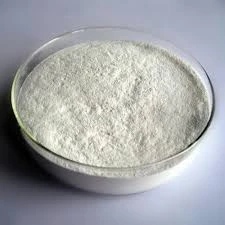
Nën . 28, 2024 02:10 Back to list
The Role of Hydroxypropyl Methylcellulose in Pharmaceutical and Food Applications
Understanding Hydroxypropyl Methyl Cellulose (HPMC) Properties, Applications, and Benefits
Hydroxypropyl Methyl Cellulose (HPMC) is a versatile and widely used cellulose ether derived from natural cellulose. The modification process involves substituting hydroxy (-OH) groups with hydroxypropyl and methyl groups, which alters the properties of cellulose, making it useful in various applications, from pharmaceuticals to construction materials. This article delves into the chemical structure, properties, and diverse applications of HPMC, highlighting its importance in modern industry.
Chemical Structure and Properties
HPMC is a white, odorless powder that is soluble in cold water but insoluble in organic solvents. Its chemical structure consists of a cellulose backbone with hydroxypropyl and methyl groups attached. The degree of substitution (DS) and the molecular weight of HPMC can be tailored to achieve specific characteristics, making it customizable for various uses. The specific ratios of hydroxypropyl and methyl groups influence the solubility, viscosity, and gel-forming abilities, allowing manufacturers to select the appropriate grade for their particular application.
One of the remarkable properties of HPMC is its ability to form viscous solutions and gels. Its thickening and stabilizing properties make it useful in improving the texture and consistency of various formulations. HPMC can also act as a binder, film-former, and emulsifier, providing additional functionality in end products.
Applications in Pharmaceuticals
In the pharmaceutical industry, HPMC is extensively employed as a key ingredient in various dosage forms, including tablets, capsules, and topical applications. Its binding properties help ensure uniformity in tablet formulation, while its film-forming capabilities contribute to extending the release of active pharmaceutical ingredients (APIs). HPMC is an ideal excipient for sustained-release formulations, promoting controlled drug release and improving patient compliance.
Moreover, HPMC is also used in ophthalmic solutions due to its viscosity-enhancing properties. It provides lubrication and comfort for patients using artificial tears, alleviating dryness and irritation in the eyes.
Food Industry Utilization
hydroxypropyl methyl cellulose hpmc

HPMC is recognized as a safe food additive and is commonly found in various food products. It acts as a thickening agent, stabilizer, and emulsifier, improving the texture and overall quality of food items. HPMC is often utilized in gluten-free baking, providing the necessary structure and elasticity that is typically achieved through gluten. Its ability to retain moisture is advantageous in extending the shelf life of baked goods and other food products.
In sauces, dressings, and gravies, HPMC enhances the viscosity and mouthfeel, making these products more appealing to consumers. The food industry values HPMC for its versatility and functionality without compromising taste or quality.
Construction and Building Materials
The construction industry also benefits from HPMC's unique properties. It serves as an essential additive in cement, tile adhesives, and plasters. The inclusion of HPMC improves workability, allowing for easier application, while also extending open time, which is vital for adjusting and correcting applications before they set. Furthermore, HPMC contributes to the water retention properties of mortars, ensuring adequate hydration of cement during the curing process, thus enhancing the final product's strength and durability.
Environmental Considerations
As an environmentally friendly additive, HPMC is derived from natural cellulose, making it biodegradable and sustainable. Its extensive use across various industries demonstrates its safety and effectiveness, aligning with the growing demand for environmentally responsible materials. Many industries are increasingly focusing on sustainable practices, and HPMC provides a viable solution that supports eco-friendly formulations without sacrificing performance.
Conclusion
Hydroxypropyl Methyl Cellulose is a remarkable and multifunctional polymer that has found applications across numerous industries, including pharmaceuticals, food, and construction. Its versatility, customizable properties, and environmentally friendly nature make HPMC an invaluable ingredient in modern formulations. As industries continue to innovate and adapt to consumer demands, the importance of HPMC is expected to grow, reinforcing its position as a staple in diverse applications. Understanding and leveraging the capabilities of HPMC can lead to improved products and contribute to a more sustainable future.
-
Versatile Hpmc Uses in Different Industries
NewsJun.19,2025
-
Redispersible Powder's Role in Enhancing Durability of Construction Products
NewsJun.19,2025
-
Hydroxyethyl Cellulose Applications Driving Green Industrial Processes
NewsJun.19,2025
-
Exploring Different Redispersible Polymer Powder
NewsJun.19,2025
-
Choosing the Right Mortar Bonding Agent
NewsJun.19,2025
-
Applications and Significance of China Hpmc in Modern Industries
NewsJun.19,2025







